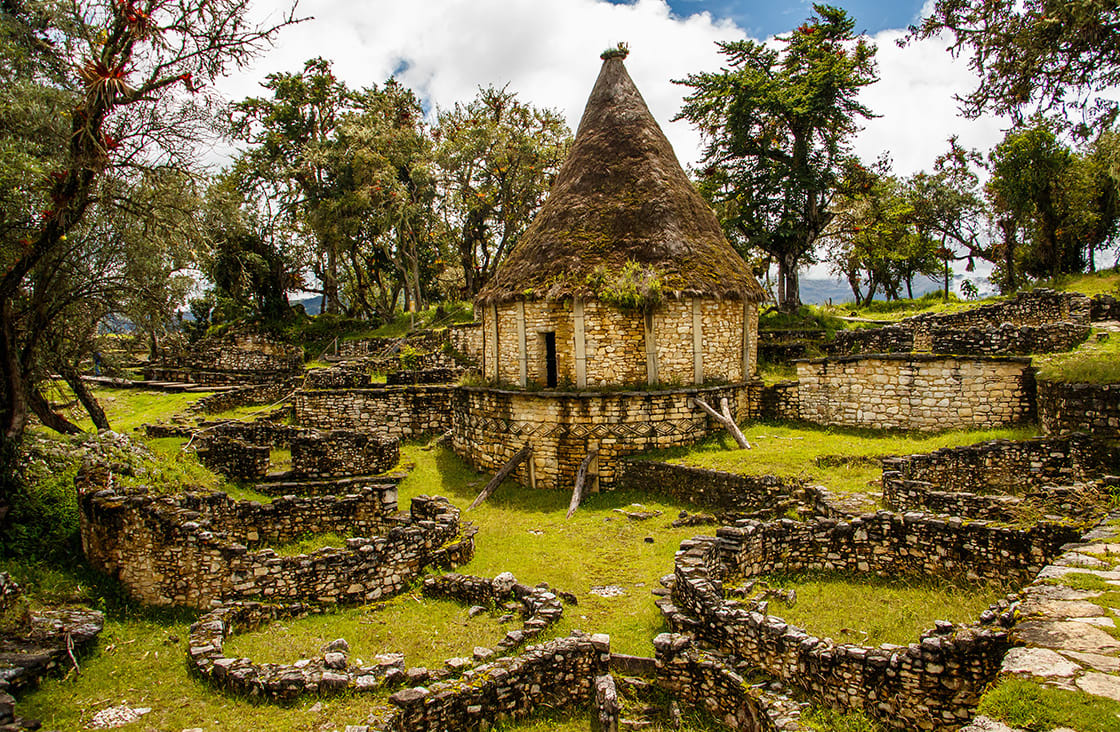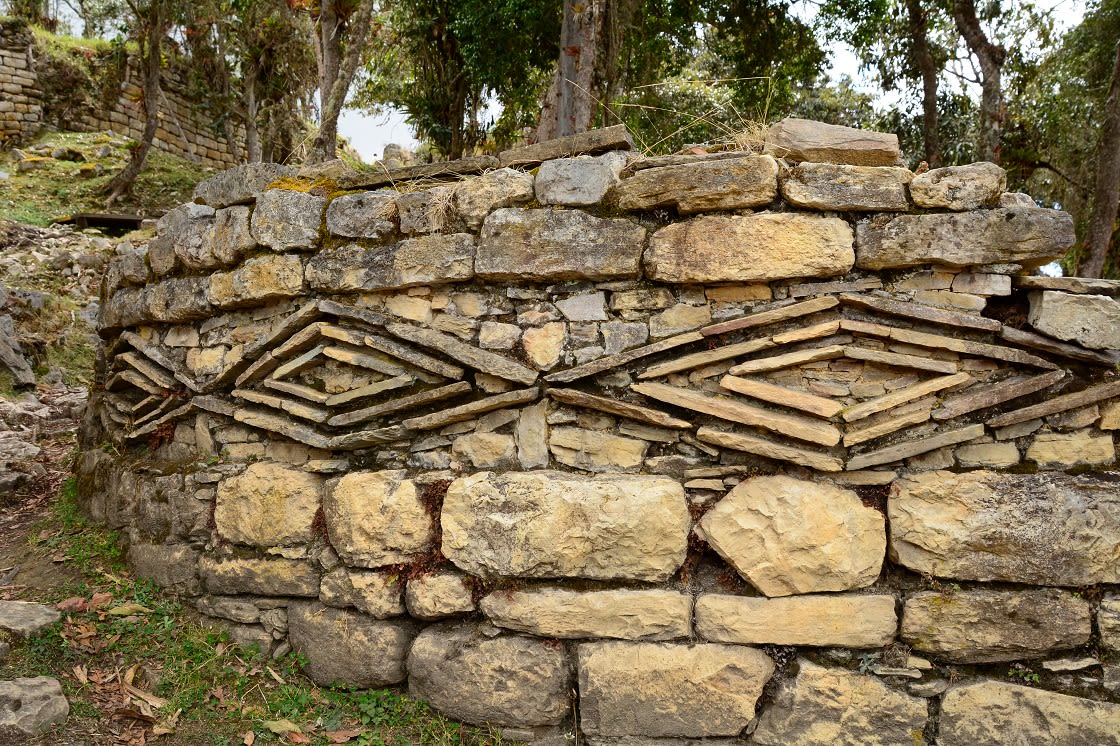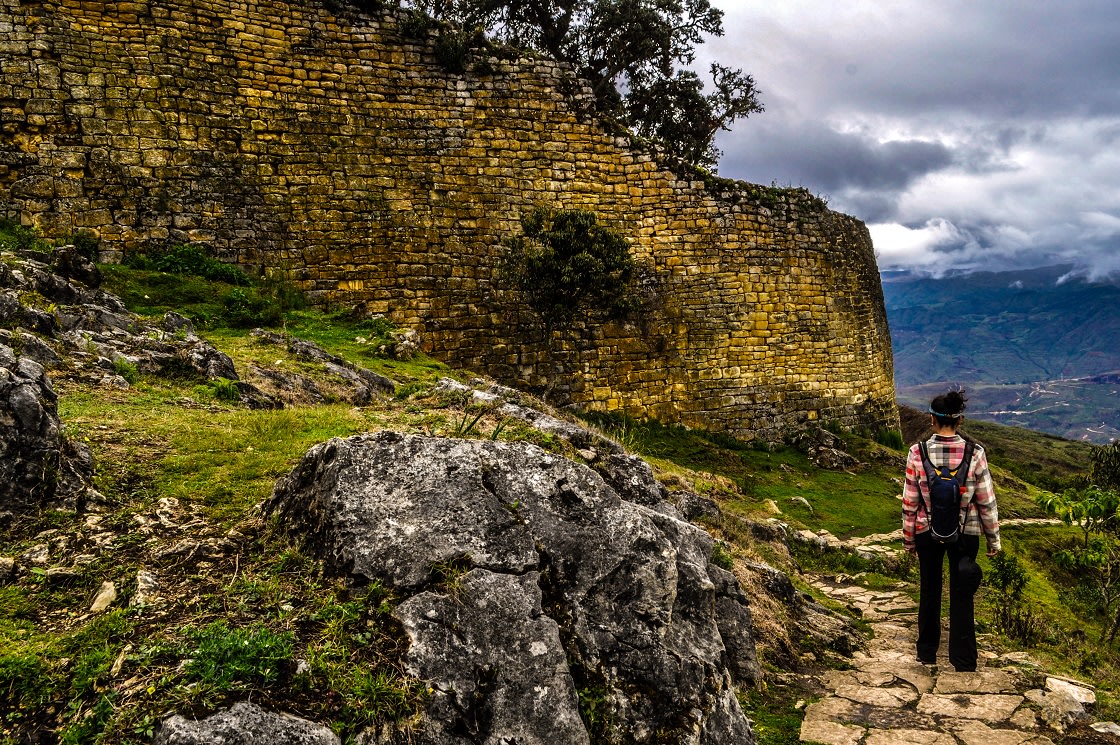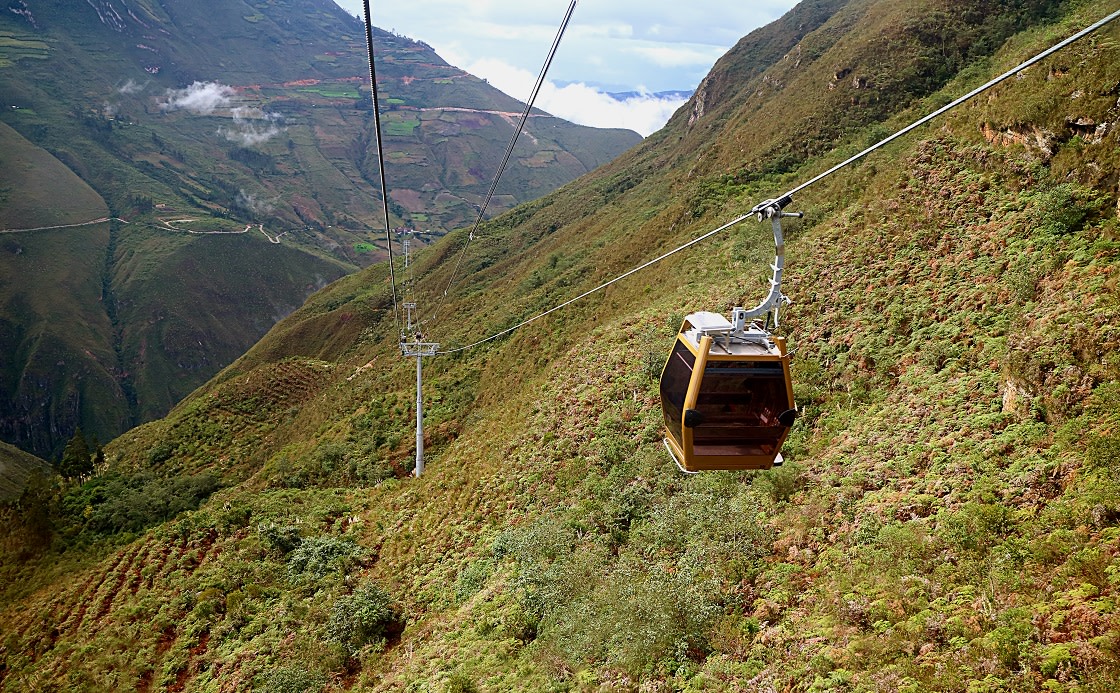
The ancient fortress of Kuelap is a unique archeological site in Northern Peru, pre-dating Machu Picchu by 1,000 years. Often called one of the most overwhelming pre-Inca sites, it is quickly becoming a favorite amongst visitors looking for something off-the-beaten path. With the recent installation of a cable car and new flight routes to a nearby airport, it is fast becoming a more accessible destination as well. Here is the background on this little-known but spectacular site, and what makes Kuelap so intriguing.

Beautiful Decorative Designs On The Stone Walls
Built in the 6th century AD, the fortress of Kuelap is an ancient walled city connected with the Chachapoyas culture. It is made up of more than four hundred buildings, enveloped by enormous exterior walls made of stone that measure up to 19 meters in height. Approximately 600 meters long and 110 meters wide, it is dramatically situated on a ridge above the Utcubamba Valley in Northern Peru. Kuelap’s original purpose remains unknown, though it is believed to have been built to defend against the Huari or another group.
Radiocarbon dating indicated that the complex was occupied until the Early Colonial period, which lasted from 1532 to 1570. It was only later rediscovered in 1843, when a local judge in Chachapoyas, Juan Crisostomo Nieto, made a survey of the area and noted Kuelap’s remarkable size. Villagers who had known of the site for generations led him to it, leading to an explosion of interest. Kuelap grabbed the attention of explorers, historians and archaeologists, though remained thoroughly unexplored for over a century.
In May and June of 1997, the first exploratory expedition of Kuelap began, directed by Federico Kauffmann Doig. They found a cave filled with rock paintings, protecting five mausoleums. Inside these mausoleums were funeral bundles, ceramics, and other remnants attributable to the Chachapoyas culture.
It was in a later expedition in July of 2010 when a large collection of human bones was found. Dating back to the seventh century AD, remains of 79 human bodies were found within a stone wall, which is believe to have been a secondary grave site, customary in pre-Columbian Peru.

Trekking In The Kuelap
Today remain multiple levels within the complex, having supported about 400 (mainly cylindrical) constructions, of which only bases remain. The three most notable structures are El Tintero, La Atalaya, and El Castillo.
El Tintero is a tower in the shape of an inverted cone, seemingly defying the laws of gravity and remaining standing today. La Atalaya is a tower structure, and El Castillo is a three-level structure that can be accessed through three portals in different parts of the complex.
What is most fascinating about Kuelap, though, is how massive of a construction it is, and the advanced engineering that would have been required to create its sophisticated drainage system. Even more perplexing is that scholars remain unsure of its use (much like Machu Picchu). Because of its location and high walls, many support that it must have acted as a “fortress”, with some believing it to have been a fortified refuge for the population in an emergency situation.
Art and relics found at the site, however, suggest that it must have also had a religious or sacred function. Some conclude, based on general knowledge about the Peruvian archaeological past, that it could have been a pre-Inca sanctuary in which a powerful aristocracy resided, focused on overseeing food production and providing religious leadership. New discoveries emerge offering researchers new clues, but for now Kuelap’s purpose remains unknown, adding to its mystery and allure.

Telecabinas Kuelap Or Cable Car
Situated about 3,000 meters above sea level, the ruins of Kuelap sit atop a hill on the left bank of the Utcubamba Valley in the Amazonas state of Northern Peru. Many use Chachapoyas as their base to reach the fortress. To get to Chachapoyas travelers can either fly into Chiclayo or Tarapoto and taking an 8-9 hour scenic drive, or fly a little closer into Chachapoyas’ small airport from Tarapoto, or direct from Lima into the larger Jaen airport which is a 3 hour drive from Chachapoyas.
Reaching Chachapoyas is just the first part of your adventure as Chachapoyas still lies some 100km and 3 hours’ drive from the ruins; 1 hour to the closest town of Nuevo Tingo, then a rather bumpy 2 hour dirt road ‘crawl’ for the remaining 34km around the valley’s steep slopes.
Until recently, the only alternatives for those not wanting to take the 2 hour drive from Nuevo Tingo was a stunning but strenuous 9km uphill hike (or horseback ride) from the town ascending 1,200ft of elevation in 4 hours (the downhill return takes 2 hours). However the installation of a new cable car 10 minutes bus ride from the town now means travelers can spectacularly traverse the valley that you previously had to hike around, crossing a 4km distance in a mere 20 minutes and cutting the journey time from Chachapoyas in half to approximately 1½ hours. The Kuelap cable car costs 20 soles (around $5.50) for a round trip.
Be sure to give yourself plenty of time to explore when you reach the ruins. This complex has been heralded by those in the know as the most impressive pre-Colombian ruins in South America, and many explorers that have already been to Kuelap are already calling the ruins “the new Machu Picchu”, quite the accolades indeed given the amount of competition that can be found across the continent.
While Rainforest Cruises aim to provide accurate and up-to-date information, we make no representations as to the accuracy or completeness of any information herein or found by following any link on this site. Rainforest Cruises cannot and will not accept responsibility for any omissions or inaccuracies, or for any consequences arising therefrom, including any losses, injuries, or damages resulting from the display or use of this information.




